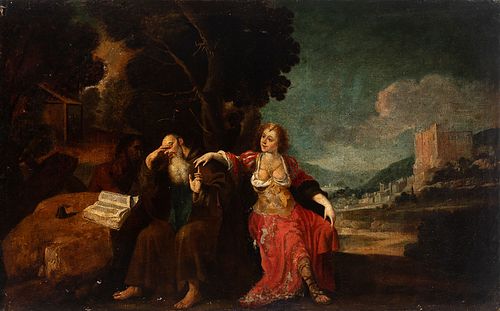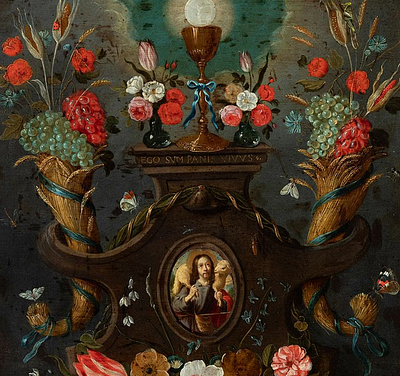Spanish school; first half of the 17th century. "San Antonio Abad temptations". Oil on canvas. Relining.
Lot 45
About Seller
Setdart Auction House
Carrer Aragó 346
Barcelona
Spain
Setdart Subastas was born in 2004 and is currently the first online art auction in Spain with solidity, prestige and reliability guaranteed by our more than 60,000 users. Setdart has a young, dynamic and enterprising team ready to successfully manage the purchase and sale of art works through custom...Read more
Estimate:
EUR€1,500 - EUR€2,000
$1,578.95 - $2,105.26
Absentee vs Live bid
Two ways to bid:
- Leave a max absentee bid and the platform will bid on your behalf up to your maximum bid during the live auction.
- Bid live during the auction and your bids will be submitted real-time to the auctioneer.
Bid Increments
| Price | Bid Increment |
|---|---|
| EUR€0 | EUR€10 |
| EUR€200 | EUR€25 |
| EUR€500 | EUR€50 |
| EUR€1,000 | EUR€100 |
| EUR€3,000 | EUR€200 |
| EUR€5,000 | EUR€500 |
| EUR€10,000 | EUR€1,000 |
| EUR€20,000 | EUR€2,000 |
| EUR€50,000 | EUR€5,000 |
About Auction
By Setdart Auction House
Sep 21, 2021
Set Reminder
2021-09-21 10:00:00
2021-09-21 10:00:00
America/New_York
Bidsquare
Bidsquare : 21st September - ARAS JÁUREGUI Private Collection - Old Masters, 19th & 20th Century
https://www.bidsquare.com/auctions/setdart-auction-house/21st-september---aras-j-uregui-private-collection---old-masters-19th-20th-century-7429
Setdart Auction House sofia@setdart.com
Setdart Auction House sofia@setdart.com
- Lot Description
Spanish school; first half of the 17th century. "San Antonio Abad temptations". Oil on canvas. Relining. It presents repainting and restorations. Measurements: 55,5 x 89,5 cm. Devotional work of landscape format in which the artist presents a classical composition, easy to read, but of great interest. First of all, he clearly divides the space in two; the right side shows a wide landscape, in which a great depth can be seen which is dominated, at the end, by an architectural construction, and on the left side a landscape enclosed by several trees, where a small hut can be seen. What is interesting is that the figure in the centre is not Saint Anthony, the protagonist of this story, but the woman who is trying to tempt him. The saint is displaced to the left, covering his sorrowful face and avoiding the woman's gaze. According to legend, Saint Anthony was born around 251 in Egypt, and at a very young age he retired to the solitude of the desert. He was especially venerated in Catalonia, where adventures and miracles were attributed to him, which served as a theme for Jaume Huguet (1412-1492) for his great altarpiece of Saint Anthony in Barcelona. This saint is usually depicted as we see here, as a bearded old man wearing a hooded sackcloth, a common garment of the Antonites. He is usually depicted reading the Holy Scriptures, and the episode of his temptations in the desert is, together with his visit to Paul the hermit, the most frequently depicted. The iconography of the Temptations of Saint Anthony was first depicted in Italy in the 10th century, and in medieval Europe it was frequently depicted in painting, in illuminated books, and later in German engravings. It is a subject of particular interest because it reflects the struggle between Good and Evil, between Christ and Satan. The present work depicts the saintly hermit in the desert, meditating on the Scriptures and the fleeting nature of earthly pleasures, as the accompanying book attests, although the usual skull, cross and hourglass do not appear.
- Shipping Info
-
In-house shipping available. Please inquire at admin@setdart.com.
-
- Buyer's Premium



 EUR
EUR CAD
CAD AUD
AUD GBP
GBP MXN
MXN HKD
HKD CNY
CNY MYR
MYR SEK
SEK SGD
SGD CHF
CHF THB
THB

















